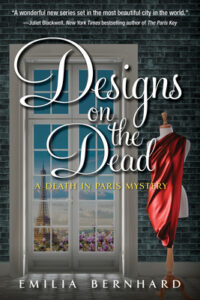In one of the best considerations of mystery writing that I’ve heard, American historian Karen Halttunen argued in a lecture that the genre has its foundations in public execution. Murderers used to be put to death on a public scaffold, and they were expected to confess their crimes to the crowd before they died. Often these confessions (or imagined versions of them) were then made into ballads that were printed and sold to the public. With the decline in these executions, there was a decline in public confessions, and the gap was filled by mysteries: people need to know what prompted a murderer to murder, and the detectives in mystery stories fill that need for them.
Motive, as Halttunen’s theory suggests, is the core of mystery. Readers may want to know whodunit, but they won’t be happy until they know whydunit, too. If the detective says, “Dave killed Tom!”, you can be certain that a mystery reader won’t be satisfied until they know what prompted Dave to do so: “Dave killed Tom to inherit his money!”
But in my opinion the richest mystery writing pays attention not only to this motive, but also to the deeper, more personal and more complex, motive that lies beneath it: the thing that makes the criminal think their criminal act is an acceptable answer to the problem. After all, many people may want money, but they don’t think it’s okay to kill to get it, or that it’s okay to, say, falsely accuse people of kidnapping them in order to cover up an affair (as happens in one of my favorite mystery novels, by Josephine Tey). The most fulfilling mystery novels acknowledge this by supplying not only a motive but also at least something of what I would call motivation: a glimpse into the mental interior of their villains.
Motivation is much harder than motive, because rather than asking, “Why would someone…?” it asks, “What would make someone able to…?” It’s also much more involving than motive because it requires an author, and a reader, to enter into the psyche of a person very different from them.
And this, I think, is what makes for a deeply engrossing mystery novel. It’s not the motive, or the motivation, that enthralls, but the focus required to try to understand the motivation—maybe even to experience that motivation for ourselves. An engrossing mystery builds for its readers a psyche that, because it is mysterious, is also absorbing.
It’s a cliché to say that we live in a world that encourages us to focus less and less. Innumerable TV stations, streaming services, constant access to e-mail, social media, apps, and even news updates all encourage us to flit from stimulus to stimulus, the world reduced to bite-size pre-occupations and bits of information. In all this rush and bustle we tend to forget that in fact the brain likes to focus, that it craves and flourishes on the opportunity to immerse itself fully in something. Think of the last time you really concentrated on something for a period of time. When you’ve finished that kind of absorption there’s a sense of weariness, but there’s also a strange sense of satisfaction. A richly psychological mystery or suspense novel, one that’s interested in building and unfolding its villain’s interior, produces a similar sensation.
Here are five novels that I think are among the best of this kind, listed in no particular order:

Live Flesh (1986) – Ruth Rendell
Rendell is the mistress of psychological mystery fiction, and for my money this is her best. Victor Jenner insists he doesn’t know why he shot a policeman, but given that they were in a standoff at the time no one believes him. It turns out both that Victor is right—he doesn’t know why—and that there is a perfectly good reason, but buried so deep in Victor’s mind that even he doesn’t know it’s there. Victor is a pretty unpleasant fellow, but Rendell does such a fascinating job of unfolding his psyche that readers end up sympathizing with him.
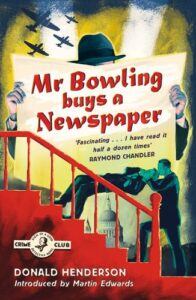
Mr Bowling Buys a Newspaper (1943) – Donald Henderson
This might best be described as the diary of a disaffected serial killer. Mr Bowling (we never learn his first name) wants to be caught for his murders, but the papers keep mistaking them for natural deaths. The book slowly unfolds his background, his thought processes, and his yearnings, until he becomes as fascinating as he is strange. By the end of the book he’s actually likeable. Raymond Chandler, an author who knew a thing or two about building a character’s interior, thought this was one of the best books he’d ever read.
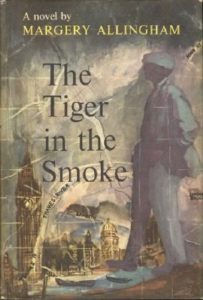
The Tiger in the Smoke (1952) – Margery Allingham
Jack Havoc is a liar, a thief, and a murderer. He is also the most fascinating character in a book filled with fascinating characters. Havoc himself is not much interested in mental interiors, and his behaviour and descriptions of him by others suggest he’s nothing more than an empty sociopath, but Allingham does a wonderful job of sketching his interior landscape, and of supplying the experiences and beliefs that led him to a life of blank nihilism. Such a good job, in fact, that when he performs his unexpected final act readers feel it is not out of character but rather perfectly logical.
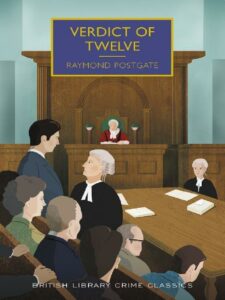
Verdict of Twelve (1940) – Raymond Postgate
Verdict of Twelve is a classic courtroom novel in which a woman is on trial for a murder she may or may not have committed, but the largest single chunk of the book focuses on the jury. Postgate creates a complete background for each member, then shows how that background influences their reading of the case (he believed that people’s minds are constructed by their experiences). This smooth detailing of cause and effect makes for an almost painful reading experience, since one can follow the false paths that lead to the jury’s decision. In a final flourish, readers learn the solution to the mystery, but that solution reveals a mind at the same time so banal and so morally twisted that it took me hours to work out my response.
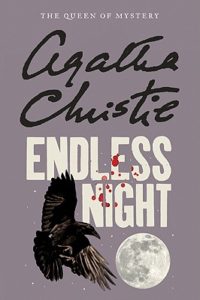
Endless Night (1967) – Agatha Christie
A late Christie, and an unusual one. Aimless ne’er do well Michael Rogers attains everything he ever wished for by marrying a beautiful rich girl. Rogers narrates the novel, which is made riveting by the fact that he cannot see his own psychological changes, but readers can; Christie presents them subtly but clearly in the way she has him narrate his life. When, at the end of the book, Rogers realises he has made terrible choices and totally misunderstood himself, readers have already known for some time. As a result we once again find ourselves pitying the man we should condemn.
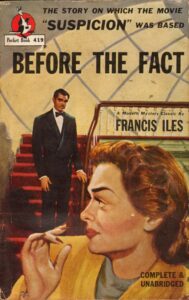
Before the Fact (1932) – Francis Iles
Unlike the others in this list, Before the Fact shows the interior not of its villain but of its victim. Lina McLaidlaw falls under the spell of charmer Johnnie Aysgarth. The book charts the lies and swindles Aysgarth practices to get hold of Lina’s money, as well as Lina’s dawning realization that he is an embezzler, adulterer, and eventually a murderer. Yet Iles also carefully delineates Lina’s wishes and yearnings, the needs that make her unable to break from her uncaring and dangerous husband. And he does this so delicately and accurately that in the end, rather than feeling contempt or dismissiveness for Lina, readers can almost empathize with her.

When Will There Be Good News? – Kate Atkinson
As is true with Rendell, you could pretty much put any Atkinson mystery on this list—she’s a writer who makes other writers think they might as well throw their computers away. I picked this novel, though, because it performs what I think is an unprecedented move: it reveals how a central character’s motivation has caused her to build a certain kind of morality and personality, then almost at the last minute shows you how that same motivation, under different circumstances, produces an entirely different but equally logical morality. For that reason, I consider it the best of her mysteries.
***


